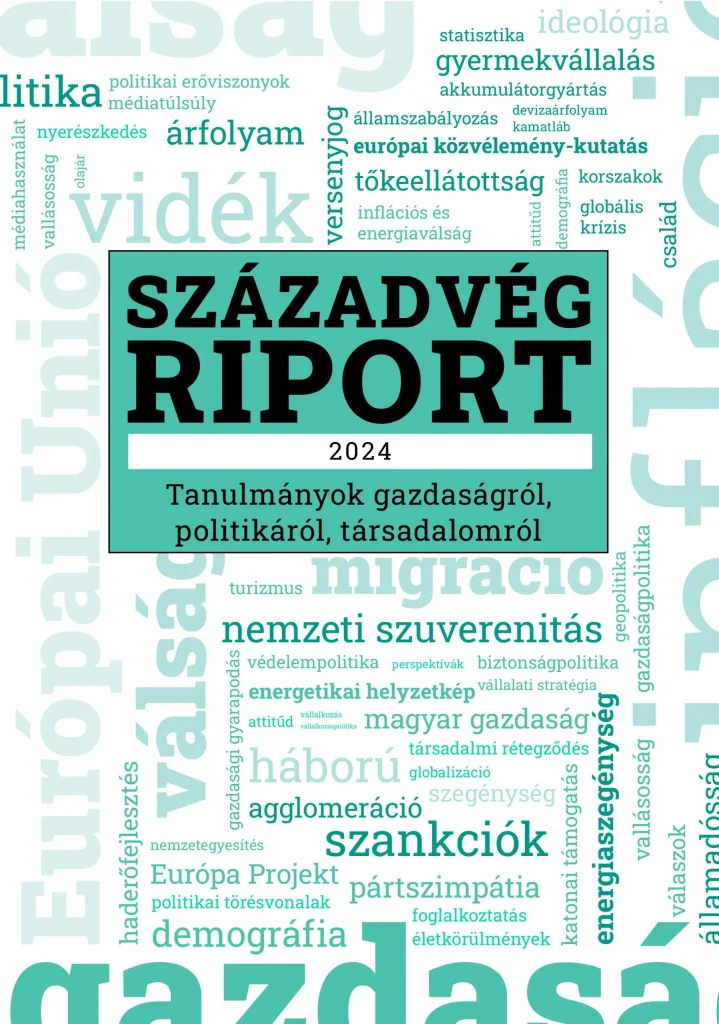In her welcome speech, Kinga Kenyeres, Director General of the Századvég Foundation, said that the aim of the recent research on social groups is to enable a wider academic and interested audience to learn about the social processes taking place. She also stressed that such a paper could be important for decision-makers as well, as it would allow them to see the situation of Hungarian society or the perception of individual groups on a particular issue before government decisions are taken.
Afterwards, Balázs Hidvéghi, Member of Parliament, Parliamentary State Secretary of the Prime Minister’s Office and Deputy Minister, said in his speech that the intellectual and professional work carried out by Századvég and its various institutions and institutes is very important. Balázs Hidvéghi stressed that these analyses are not only short-term surveys, but also studies that cover longer periods. He then spoke about the government’s successes since 2010. He stressed that budget allocations for family support benefits have quadrupled in the last 15 years.
Dr. Péter Pillók, Director of the Social Trends and Media Research Institute of the Századvég Foundation presented the results of the research. The survey interviewed 60,000 people between July and November 2024. The results were then compared with the results of the 2019 survey. In his presentation, Péter Pillók spoke about processes that shed new light on social conditions, such as digitisation, the pandemic, the discourse around family and birth, and migration. He added that, alongside these processes, there is an individualistic zeitgeist that is leading to the loosening of community ties. In general, saving propensity increased between 2019 and 2024 in Hungary. The survey also showed that among the strategies for coping with difficulties, Hungarians were more likely to spend more time with loved ones and to be more aware of their finances.
His presentation pointed out the duality in future prospects: while Hungarians are skeptical at the social and economic level, they are less pessimistic about their own living standards. The data also showed that: Hungary is one of the more optimistic countries about the future of Europe.
The results of the research were then discussed by experts in a round table discussion led by Dr Péter Pillók.
According to Dr András Csite, Director of the HÉTFA Research Institute and Analysis Centre, this research sends the message that when Hungarians look at the world, they find it full of problems (e.g. climate catastrophe, war, etc.), but when they look at their own lives, they realise that “it’s not so bad after all”. In other words, there is a tension between the perception of the social situation and that of one’s own.
András Hajdú, Deputy State Secretary of the Office of Public Policy Analysis, quoting a US study, said that 70-80% of the richest Western countries are pessimistic about their children’s future. This shows that something is fundamentally shaken in the Western world. In his opinion, there was a similar social and political situation in the 1970s.
“The emergence of Artificial Intelligence as a new technology can fundamentally improve people’s quality of life”, said Dávid Kollár, Head of Operations at the Social Trends and Media Research Institute of the Századvég Foundation, adding that those who can use AI can save time and be more efficient.” Commenting on the resilience of individuals and communities to crises, he said that people and societies that have adequate goals and organise their lives around a paradigm, are better able to respond to the challenges of crises.
Source: MTI/Századvég’s own editing
